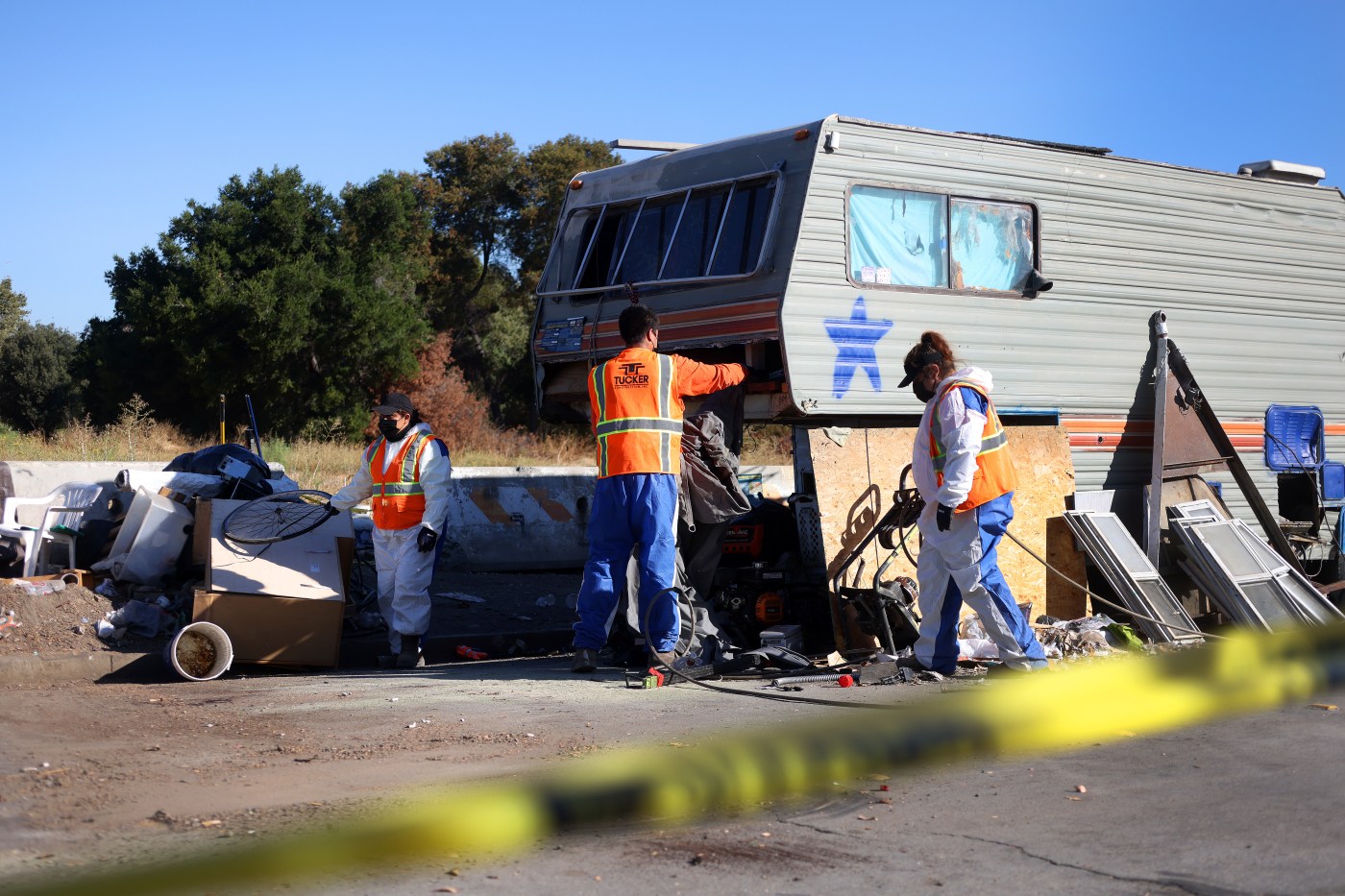San Jose began clearing part of one of its largest and most dangerous homeless encampments on Tuesday in an effort to move around 40 tents, vehicles and makeshift dwellings out of the flight path at San Jose Mineta International Airport.
Authorities have in recent years repeatedly removed homeless people from the area around central San Jose’s Columbus Park. Yet without enough shelter beds or overnight parking lots for everyone on the street, the city has been unable to find a permanent solution.
City officials said they’re clearing the two-block area on the north side of Asbury Street at the direction of the Federal Aviation Administration. The concern, officials said, is that campfire smoke could hinder pilots’ visibility and that birds attracted to trash at the encampment could fly into the engines of planes landing at the airport.
Ahead of the sweep, the city said it worked with its nonprofit service provider, HomeFirst, to offer everyone set to be forced out shelter or housing, though officials could not say how many people accepted. It was unclear where those staying at the camp could end up next.
The move to clear the camp comes as San Jose Mayor Matt Mahan has pushed the city to crack down on encampments while also adding tiny home shelters, safe parking lots and sanctioned campsites for its roughly 6,300 homeless people.
In a statement, Mahan said disbanding part of the Columbus Park camp was necessary to ensure residents’ safety. The city did not have an estimate for how many people will need to move or the total number staying at the encampment.
“There are certain cases where an encampment is so unsafe and violating so many laws, that we can’t wait for our solutions to scale,” Mahan said.
Camp residents say drug use and gunshots are common at the site, where it appears around 100 people stay. In February, two people were charged in connection with a fight that ended with a fatal stabbing at the encampment.
On Tuesday afternoon, yellow police tape cordoned off a section of the encampment as work crews filled green dumpsters with trash and debris. A handful of outreach workers offered camp residents food and water. Authorities on site hadn’t instructed anyone to leave the area, though some residents had moved their RVs and vans to a cross street that wasn’t targeted to be cleared. Officials said most vehicles had voluntarily left the sweep area by later in the day.
One camp resident, who said her name was Raelene, sat outside her sun-faded camper clutching a dark glass pipe and red Bic lighter. After authorities taped an abatement notice, dated Aug. 29, to the side of her motorhome, she and her boyfriend are now considering moving to Merced, where she has family.
She said she’s grown tired of the gunshots and “thievery” at the encampment. “Not savory, not my favorite,” she said.
Raelene, who said she couldn’t remember her last name, wasn’t sure if officials had offered her a shelter bed or safe parking space. Homeless people sometimes turn down shelter for a variety of personal reasons, from health and safety concerns to a reluctance to follow curfews.
Related Articles
While building ‘Camp Hope’ in Martinez, she lost $125,000 to a burglar who had sought her help. Now this former vice mayor is ready to do good deeds again
Does sleeping on the street make this disabled Bay Area Marine Corps veteran a criminal?
Recent Oakland homicide victim was among those who sued to stop state from clearing them out of homeless encampment
Number of homeless students in Santa Clara County schools has nearly doubled since 2020
‘A cataclysmic mess’: Is anyone to blame for the state of an East Bay marina?
The sweep follows Gov. Gavin Newsom’s executive order last month directing state agencies to work with cities to shut down encampments and a subsequent threat to cut funding to local governments that fail to get more people off the street. In June, a landmark U.S. Supreme Court granted cities broad authority to clear encampments without first offering homeless people shelter.
Another camp resident, who goes by the name Termite, said he’s been cleared from the area around five times since falling into homelessness seven years ago. He said camp abatements can be traumatizing for homeless people, who sometimes have their vehicles towed or possessions tossed out. He added there’s often an uptick in violence in camps following sweeps.
“It just lowers your morale,” he said, “and it causes a lot of friction between people.”












